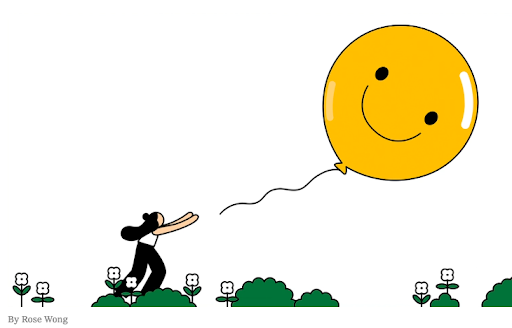Cultivating a learner-centric environment isn’t always easy. With COVID lingering and back-to-school plans in full swing, are we taking the time to bring our learning communities together? By creating opportunities for school-wide challenges, collaboration, and co-design, we can unite our learning communities, fuel intrinsic motivation, and empower collective creativity. So, educators and students, if you’re tired of traditional lessons, looking to make a difference in your community, or simply want more relevance in what and how you learn, we’ve got you covered. Whether it’s artsy, political, community-related, or centered on personal growth, check out these 10 project ideas for learner-centric environments.
1. Co-design an online course
We all know there are ways of making online learning better, so why not make it a collaborative challenge? Co-lead a day, week or month-long online learning challenge. Courses can be co-designed between students, educators, and/or technical experts from the community. Propose your course idea to your school or university administration and attempt to gain their support in spreading the news for enrollment. Whether it’s writing, design, pottery, coding, your course could be about anything; whether that’s something you’re an expert at or a skill you’re hoping to further develop, the options are endless! Consider filling an important need in your community right now — even if that need is just having fun.
2. Dive into mask art
Masks are saving lives, right now. Unfortunately, there’s just something about being forced to wear a stifling, monochromatic face covering that makes us all resent masks at one point or another. Why not join the UN-supported Artists against Covid-19 initiative to “advance global social responsibility awareness by encouraging people to wear masks?”

4 of the many hundreds of masks made in honor of the Artists Against Covid-19 project (UNESCO)
You can design, print, and exhibit your mask art alongside information about masks’ effectiveness, inequalities in access to masks, and the rise of masks as a new fashion item. By designing and creating your gorgeous face coverings, you can help make the experience of wearing a mask hopeful. And we could all use a bit more hope these days.
3. Reset for sustainability
Sometimes, it seems like Covid-19 forced us all to hit the “OFF” buttons in our lives, take a breath, and reconsider our choices. That makes this pandemic the perfect opportunity to skim through the thousands of decisions you make each day and increase their sustainability. From buying vintage and unplugging your household devices, to making your city join Dark Sky Communities and mapping local air pollution, there are literally 100+ things you could do to fight against climate change. Okay, okay, so you want to start small. Well, here are three things you can do right away: a) eat less meat (especially reds!) b) swap one wasteful product for a reusable, non-plastic based alternative c) wash your clothes with cold water. Honestly, it’s that simple. The hardest part? Committing to change.
4. Get political, peacefully
John Koenig, in the Dictionary of Obscure Sorrows, came up with the word “kuebiko” to describe “a state of exhaustion inspired by [acts] of senseless violence.” The term applies to much of what we’ve been seeing in the news lately, whether that’s protests gone wrong or Covid-19 deaths that could have been avoided. These conditions make it harder to engage in activism peacefully, but it’s not impossible! If there’s a cause you’d love to show your support for, you can rally people to partake in a solo run to support a cause, like the Run for Arbery initiatives that protested racial violence while respecting social distance. You could also stage a die-in, a form of protest in which participants pretend to be dead, lying on the floor in a public space.

Extinction Rebellion climate change activists in Berlin (AFP, South China Morning Post)
You could also draw hundreds of chalk figures in symbolic representation of the victims you’re protesting for. Either way, die-ins are brutally effective, eliciting gut-wrenching feelings from any outside observer.
5. Tackle Covid-19 hands-on (literally)
Some creative souls designed chairs out of shopping carts. Others made pretty bizarre upcycled ski furniture. And many created cool bed frames out of old wooden pallets. The possibilities are endless when it comes to homemade furniture and decoration, especially using recycled materials or items bound for the bin. Why not develop your craft or pick up a new skill to help your community out? Many small businesses have faced serious budget cuts and are in dire need of financial and moral support. You can explore wood carving, sewing, painting, and more! Make furniture and art pieces with your own hands, then donate to a community enterprise to bring them a bit of joy.
6. Write and/or stage a theatre piece to spread Covid-19 awareness
Shakespeare may have written one of his best pieces during the plague, why not you? Just saying — there is so much to write about right now, how could you not? Take a look at Tony Kushner’s “Angels in America,” which reveals the socio-political and spiritual dimensions of the AIDS crisis, Samuel Beckett’s “Endgame” and Karel Capek’s “The White Plague,” which blame disease on frail social bonds, or Larry Kramer’s “The Normal Heart,” which boldly asks spectators to help prevent the spread of H.I.V.

The two protagonists in “The Normal Heart” embrace when they discover a sign of AIDS on one of them’s foot (Ryan Dorgan, Jackson Hole Daily Photos)
These plays are lively, demanding, and heart-wrenching, prompting the audience to reflect and grow. Yours does not, by any means, need to match up to professional standards. So why not consider creating a cabaret, a one-person show, a poetry slam, an improv event or play to help spread the word about how best to fight Covid-19?
7. Hold Curiosity Conversations
Brian Grazer set out with a simple goal in mind: to have a chat with as many interesting people as possible, to learn something from them, and to learn about himself, too. Over the years, Grazer chatted with inventors, astronauts, and torture victims through his so-called “curiosity conversations.” Nothing is stopping you from doing the same. You can start by finding individuals on LinkedIn and other networks that are in fields you aspire to succeed in, or people who have skills and talents you’d love to know more about. Is there a particular person who inspires you who wouldn’t mind answering your questions? The simplest and hardest step is politely asking them for 20 minutes of their time — in any case, they won’t bite, so there’s no need to be scared. Finally, arrange a meeting, prepare your questions, and let the magic begin.
8. Set up a pen pal community
Loneliness kills, too. And guess what? Some of the most vulnerable members in our society are the loneliest they’ve ever been. Forced to self-isolate indefinitely because of their age or health conditions, they’re locked indoors and cut off from the world. Some are in care homes, some are in their own homes, some are in hospitals. Regardless, each of them could use a heartwarming dose of kind words to remind them that they are not alone.

North Carolina seniors like Linda are looking for penpals during confinement (Spectrum News)
Contact your local care home or hospital to gather the names of patients and launch a campaign to gather participants. Make sure to explain what kind of hygiene measures they should take to keep the letters COVID-free. Pair up those interested, share each person’s address with their pen pal, and voilà!
9. Share stories that matter
Covid-19 has further increased political and socio-cultural polarization in many countries. Individuals from different religions, ethnicities, or even different generations may find it harder to recognize each other’s distinct struggles in these extraordinary times. Grandparents, teachers, friends… whose stories would you want to share with the world? Take the time to interview those who inspire you daily, preparing questions in advance but letting the conversation flow in unexpected directions. Maybe you could ask your grandpa for lessons about that time he tried to open a restaurant only to fail catastrophically. Or perhaps you could prompt a role model of yours to share the things that make them happiest, and why. Write down the results of these interviews in text portraits, experiment with visual arts and graphism, and/or edit the audio recordings to create a podcast! Whatever medium you choose in order to release those wonderful stories out to the world, be sure to get your interviewee(s)’ consent before you publish.
10. Create your Happiness Project
Have you ever thought to yourself, “Time is passing, and I’m not focusing enough on the things that really matter [to me]”? Gretchen Rubin sure did! Her book, a synthesis of happiness research and her own “Happiness Year” of daily changes for increased happiness, is an inspiring resource. Happiness, Rubin says, isn’t about being annoyingly cheerful every day, but rather about creating a life and mindset that grant you an inner source of contentment and peace, irrespective of external circumstances. So think of the paperback as a collection of happiness snacks, some of which can help you out while others may not serve you. There is no one size fits all when it comes to happiness.

Rosa Wong (New York Times)
Here’s how to construct your Happiness Project: a) Sit down, take a moment, and think about what would make you happier b) Break it down by values you’d like to cultivate e.g. mindfulness, and assign one to each month of the year c) Come up with simple actions and rules to put into practice for every ‘value month’ and d) Begin your year-long journey. If you’re not sure you could commit to a full 12 months, consider spending just a couple weeks investing in things that are key to your happiness. And don’t worry, if you’re not sure how to go about it, the Happiness Project book has by now garnered so much attention that you’ll find fans with a ton of tips and tricks to help you throughout the Internet. Spoiler alert: the biggest hack you’ll find out there is to avoid biting off more than you can chew — start small, with whatever matters most to you.
Remember, cool projects are a way of growing inside and outside the classroom, but the ones we’ve suggested are voluntary. If catching up on much needed nap time, binging your favorite book, or learning a new Tik-Tok dance is all you can fit in your much needed personal time, WE GET IT. Take a timeout. No one is forcing you to be on social media, take up new activities, or push yourself past your limits. Being learner-centric also means honoring your own socio-emotional needs so your curiosity, purpose and passion can thrive. Feel free to suggest other ideas that you’d love to put in practice this coming school year or to reach out to us in a few months to share what you’ve been up to.

